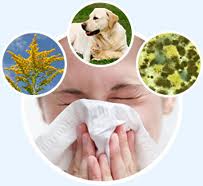Shop News
-
25/11/2025Ganoderma Benefits
-
07/02/2025Colds & Flu - treatment and prevention
-
24/01/2025Ginseng - Nature's anti-inflammatory
-
23/01/2025Curcumin Benefits
-
02/05/2024Allergies Tradicional Chinese Medicine
-
12/03/2024Food Combining and Chinese Medicine
-
23/08/2023Phytoestrogens
-
05/06/2023Ginseng Benefits
-
02/06/2023Aumento de precios de la marca Blue Poppy
-
20/07/2022Infertility and Chinese Medicine
-
10/05/2022Allergic Rhinitis
-
24/03/2022TCM Obesity and Its Causes
-
23/03/2022Cancer Prevention and Diet
-
26/01/2022Medicinal Mushrooms
-
18/12/2021Christmas Remedies
-
09/07/2021CANDIDIASIS
-
03/03/2021Chinese Herbal Medicine formula studied to improve cancer therapy
-
12/01/2021The benefits of Xiao Yao San
-
15/09/2020Coronavirus Protocol (summary)
-
01/06/2020TCM Principles for Weight Loss
-
12/02/2020Take Good Care of Your Qi
-
01/01/2020Cordyceps Sinensis Benefits
-
01/12/2019Prevention & Treatment of Colds & Flu
-
27/04/2019ANXIETY - causes and treatments
-
26/03/2019Prostatitis and Chinese Herbs
-
01/03/2019What is an Adaptogenic Herb?
-
05/02/2019New Jade Herbal Formulas
-
09/12/2018The Shen of the Heart
-
23/08/2018Hyperthyroidism and Hypothyroidism
-
05/07/2018FOCUS ON A REMEDY: WARM THE MENSES
-
04/04/2018Treating Insomnia With Chinese Herbal Medicine
-
25/03/2018Cordyceps Sinensis research
-
01/03/2018Chinese Herbal Medicine for Panic Attacks
-
17/01/2018Clinical application of the Clear Metal remedy for advanced stage of influenza
-
02/01/2018New Pediatric Formulas by "Blue Poppy"
-
07/11/2017BI SYNDROME
-
01/09/2017Chemotherapy and Anti-Oxidants
-
05/03/2017Lumbar Disc Herniation
-
31/01/2017Treatment Principles in Exterior Invasions
-
21/10/2016Healthy Aging and Oriental Medicine: Qi is the secret
-
23/09/2016Horny Goat's Weed Benefits
-
23/07/2016FOCUS ON A REMEDY: PROSPEROUS EARTH
-
25/06/2016Ginkgo Biloba Benefits
-
23/03/2016Blood Stasis
-
23/02/2016FOCUS ON A REMEDY: PROSPEROUS EARTH
-
23/01/2016CHRONIC FATIGUE SYNDROME
-
28/12/2015TONICS
-
24/10/2015A CASE HISTORY OF CHRONIC BRONCHITIS
-
23/09/2015Ganoderma Lucidum reduces obesity in mice
-
01/07/2015The Five Elements and Diet in Chinese Medicine
-
23/05/2015Daoist Sexual Practices
-
21/02/2015DEPRESSION
-
22/01/2015GLAUCOMA
-
20/12/2014ENDOMETRIOSIS
-
28/11/2014POLYCYSTIC OVARY SYNDROME
-
21/08/2014Ear infections and antibiotics
-
24/06/2014FOCUS ON A REMEDY: CHEMO-SUPPORT
-
21/03/2014Stomach-Yin Deficiency and Jade Spring
-
21/02/2014JOY, AN EMOTIONAL CAUSE OF DISEASE?
-
17/01/2014SEXUAL LIFE IN CHINESE MEDICINE
-
19/12/2013ON STAGNATION OF LUNG- AND HEART-QI
-
14/11/2013THREE TREASURES REMEDIES FOR PAIN
-
23/10/2013HEADACHE CASE HISTORY
-
22/10/2013.
-
12/07/2013Giovanni Maciocia Clinical Tip: Arouse Power
-
28/05/2013Blue Poppy - New Formulas
-
19/04/2013Case history - Chronic constipation
-
14/03/2013Three Treasures Webinar
-
31/01/2013Recurrent Bronchitis: a case history
-
31/12/2012FOCUS ON A REMEDY: SOOTHE THE SHEN
-
18/06/2012Herbs for the treatment of Anorexia
-
09/05/2012Three Treasures & Women's Treasures now available
-
09/04/2012REMEDY OF THE MONTH: CLEAR YANG
-
02/07/2011New Pediatric Formulas
-
28/04/2011Lingzhi slows progress of Alzheimer’s
-
18/10/2010European Legislation for natural products
-
19/09/2010700-year-old Chinese medicine can treat depression...
-
24/04/2010PDF Catalog
-
01/09/2009Swine Flue
Seasonal allergies and Tradicional Chinese Medicine
 If you suffer from seasonal allergies, that familiar tickle in your nose and throat that signals the arrival of spring pollen very soon; sneezing, mildly congested or a runny nose, or perhaps some mild burning of your eyes or itchiness of your skin. All these symptoms, from a Chinese Medical point of view, point to the climactic influence of the spring season - Wind.
If you suffer from seasonal allergies, that familiar tickle in your nose and throat that signals the arrival of spring pollen very soon; sneezing, mildly congested or a runny nose, or perhaps some mild burning of your eyes or itchiness of your skin. All these symptoms, from a Chinese Medical point of view, point to the climactic influence of the spring season - Wind.
Chinese medicine views seasonal allergic rhinitis symptoms as being primarily caused by the pathogenic influence of wind. Wind is qualified by symptoms that occur quickly, are rapidly changeable, affect mostly the upper part of the body, and occur at a very surface level - for example, mucous membranes and skin.
From the perspective of Chinese medicine, those of us with underlying deficiencies, often of the spleen, kidney, or lung, are especially susceptible to invasion by wind, and, therefore, conditions like seasonal allergies.
Luckily, there are many natural options to help relieve allergy symptoms.
Chinese herbal medicine is A very effective choice, and can be combined with acupuncture for faster results.
One of the most effective TCM formulas is AllerEase; Formula explanation:
In Chinese medicine, people who contract airborne allergies, ipso facto, suffer from a defensive qi vacuity. Since the defensive qi issues from the middle burner, this defensive qi vacuity is mostly due to a chronically vacuous and weak spleen failing to engender the lungs and defensive qi. Because of the close recipirocal relationship between the spleen and kidneys, there may also be a kidney qi vacuity. In either case, external wind evils may take advantage of this vacuity to enter the body where they obstruct the lungs’ diffusion and downbearing. Because the patient’s spleen is habitually vacuous, there is a tendency to phlegm dampness. This phlegm may be hidden or deep-lying, meaning that, during ordinary times, it is not apparent. However, whenever the lungs’ diffusion and downbearing of fluids is inhibited, this phlegm backs up and spills over, thus becoming apparent as mucus.
Therefore, this formula is based on the saying, “The spleen is the root of phlegm engenderment; the lungs are the place where phlegm is stored.” Within it, Codonopsis, Astragalus, Coix, and Disocorea supplement the lungs, spleen, and kidneys, the three viscera which govern water metabolism in the body. Terminalia and Schisandra secure the lungs and specifically stop runny nose. Ledebouriella and Schizonepeta relatively gently dispel wind evils from the exterior while not damaging the defensive qi. Flos Magnoliae and Mentha open the orifices and free the flow of the nose, thus relieving nasal congestion. Periostracum Cicadae dispels wind and stops itching. Platycodon guides the other medicinals to the lungs and also transforms phlegm. Dry Ginger warms the lungs and transforms phlegm. The combination of Coix and Alisma seeps dampness via urination and, therefore, helps Atractylodes eliminate dampness. Licorice harmonizes all the other medicinals in the formula at the same time as helping fortify the spleen and supplement the qi.
Research outcomes:
Thirty-three patients with wind cold allergic rhinitis and an underlying lung-spleen vacuity were given a single course of treatment with this formula and then followed for six months. In six cases, their symptoms disappeared and did not recur for the full six months of the study. In 23 cases, their symptoms recurred after more than three months but less than six months. However, repeat treatment was able to eliminate their symptoms. Only four cases got no effect. Thus the total effectiveness of this formula was 87.8%.
One of the most ancient TCM formulas used for allergies is Yu Ping Feng San:
CLINICAL STUDIES AND RESEARCH
1. Prevention of respiratory tract infection: According to one study, Yu Ping Feng San was evaluated for its effect in preventing recurrent respiratory tract infection in 32
children who have had a history of frequent infections. The treatment protocol was to administer Yu Ping Feng Pian for 14 weeks prior to winter. The study reported an
overall effectiveness of 96.9%. Furthermore, the study noted that there was an increase in IgA, but no significant changes to IgG or IgM.8
2. Allergic rhinitis: According to one study, the use of Yu Ping Feng San was associated with good results to treat 495 patients with allergic rhinitis characterized
by deficiency of the exterior. Of 495 patients, the study reported significant improvement in 293 cases, improvement in 120 cases, and no effect in 79 cases. The
rate of effectiveness was 84. Information was unavailable on 3 individuals who did not complete the study.
3. Immunostimulant: Administration of Yu Ping Feng San has been associated with increased immunity. According to one study, the use of this formula increased IgG and IgA in mice. Another study reported that the use of this formula for 2 to 3 months increased NK cell count and activities.
4. Antiviral: According to one in vitro study, Yu Ping Feng San has demonstrated inhibition on the replication of influenza A viruses.
Another of the most basic formulas used during allergy season is Jade Screen ( based on Yu Ping Feng San). This formula is incredibly simple and elegant: expels wind (Ledeboureilla root), supports the lung system (Astragalus root), and supports the spleen system (Atractylodes). The simplicity of this formula also makes it highly adaptable for each individual patient's presentation.
Explanation
Jade Screen™ is a formula specifically designed to treat the manifestations of allergic rhinitis. The problem is becoming more and more common, partly because of an increasing genetic predisposition to allergy and partly through heavy atmospheric pollution in cities. Although this formula contains the classical prescription “Jade Wind-Screen Decoction” (Yu Ping Feng San), its main emphasis is not on tonification but on expelling Wind and restoring the diffusion of Lung-Qi to stop sneezing and nasal discharge. In addition to herbs which expel Wind and target the nose, there are three herbs which are included for their anti-allergy effect: Dan Shen, Wu Wei Zi and Wu Mei.
A deficiency of the Kidneys is often at the root of atopy (the tendency to allergic diseases such as atopic eczema, allergic asthma and allergic rhinitis). The formula is aimed primarily at treating the Manifestation (i.e. Wind in the nose) rather than the Root. To treat the Manifestation and the Root simultaneously, the formula could be combined with the Herbal Sentinel (Yang or Yin).
Advised Formulas:
- AllerEase - Blue Poppy
- Yu Ping Feng San - Blue Poppy
- Jade Screen - Giovanni Maciocia
- Sneeze - Jade Herbal
- Bi Yan Pian
- Cang Er San
Nasal irrigation with saline can be extremely effective at washing allergens out of the nasal passageways and preventing an immune response. Additionally, the saline helps to moisturize the nasal membranes and control swelling. Goldenseal and/or grapefruit seed extract are great additions to the traditional saline wash.
One of the best choices for effective and side effect free treatment is acupuncture. Acupuncture works incredibly well because it not only relieves current symptoms, but also balances the immune system and corrects underlying deficiencies to help prevent symptoms from recurring. Regular treatments are most effective during allergy season, ideally starting acupuncture therapy a few weeks before symptoms hit their peak.
Supplements can also be of great support to your system this time of year. Quercitin can help to normalize the histamine reaction, Bromelain thins mucous and reduces nasal passage swelling and inflammation, and good quality probiotics help to normalize large intestine and gut function and, therefore, support the immune system as a whole.
Remember, there's no reason to suffer this season. Try some of the many natural options available to you to find relief from allergy symptoms!
